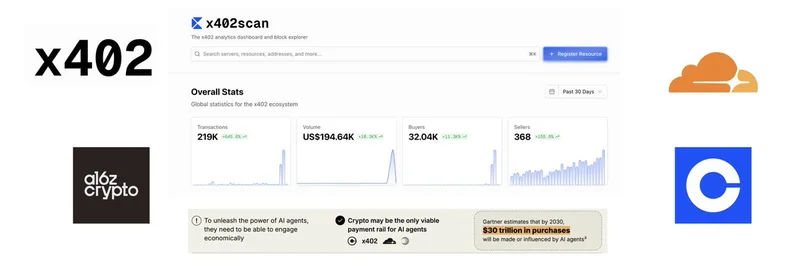In the midst of the chaos that rocked the crypto markets on October 10, 2025, one tweet from MartyParty (@martypartymusic) stood out for its clarity and reassurance. As Bitcoin dipped below $110,000 and altcoins plummeted by 15-30%, triggering record-breaking liquidations exceeding $19 billion, MartyParty reminded everyone of a fundamental truth in blockchain: nothing actually changed on-chain.
Here's what he posted:
I want everyone to understand something right now.
Nothing changed on chain. Crypto did not get affected.
All that just happened is the US dollar fiat pairs and centralized exchanges and Oracles changed.
This is why we need to move to a crypto standard.
1 $BTC = 1 $BTC
1 $SOL = 1 $SOL
1 $SUI = 1 $SUI
1 $ETH = 1 $ETHThe dollar pricing is centralized, opaque and highly manipulated.
This message quickly gained traction, with over 600 likes and thousands of views, as traders grappled with the fallout from President Trump's escalated US-China trade tariffs, which sparked the flash crash. Reports from CoinDesk and Bloomberg detailed how the geopolitical tensions led to massive sell-offs and liquidations.
Breaking Down the Crypto Crash
To appreciate MartyParty's point, let's first understand what went down. On October 10, 2025, the crypto market experienced its largest single-day liquidation event ever. Bitcoin (BTC) tumbled 10%, while Ethereum (ETH), Solana (SOL), and other altcoins saw even sharper declines. Meme tokens, known for their wild swings, were particularly hard-hit, with some briefly flashing to near-zero prices on certain exchanges due to liquidity issues or glitches.
The trigger? Escalating trade wars. As Reuters reported, Bitcoin extended its decline amid fears of broader economic impacts from new tariffs. This isn't unusual—crypto often reacts to macroeconomic news—but the speed and scale were unprecedented, leading to over $19 billion in wiped-out leveraged positions, as noted by ValueTheMarkets.
What Does 'On-Chain' Mean, Anyway?
If you're new to blockchain, "on-chain" simply refers to activities and data that happen directly on the blockchain network itself. Think of it as the core ledger where transactions are recorded immutably—stuff like token transfers, smart contract executions, and supply mechanics for coins like BTC or meme tokens.
MartyParty is saying that none of this core stuff budged. Your 1 BTC is still 1 BTC in the blockchain's eyes. The drama unfolded in "fiat pairs," which are trading pairs where crypto is priced against traditional currencies like the US dollar (USD). These prices are often set on centralized exchanges (CEXs) such as Coinbase or Binance, relying on "oracles"—third-party services that feed external data (like USD prices) into the system.
The problem? These elements are centralized, meaning they're controlled by a few entities and prone to manipulation, opacity, or external shocks like political announcements. A timely tweet or policy shift can send ripples through these systems, but the underlying blockchain chugs along unaffected.
Why This Matters for Meme Token Enthusiasts
At Meme Insider, we're all about meme tokens—the fun, community-driven coins that can moon or rug in a heartbeat. In this crash, many memes got obliterated in USD terms, but as MartyParty points out, their on-chain reality stayed the same. Your holdings in a Solana-based meme like $BONK or $DOGE equivalents didn't vanish; it was just the dollar valuation that tanked temporarily.
This highlights a key lesson for blockchain practitioners: volatility in fiat pairs doesn't equal fundamental change. Meme tokens thrive on hype and narratives, but building on decentralized networks like Solana or Ethereum means they're resilient to centralized manipulations. Replies to MartyParty's tweet echoed this, with one user noting altcoins "hit $0 even" on exchanges—likely a glitch from extreme volatility—while another worried about ledger transparency revealing who profited from "timely tweets."
This meme from a reply perfectly captures the sentiment: no matter the fiat noise, 1 BTC = 1 BTC. It's a reminder to zoom out and focus on crypto-native metrics.
The Call for a Crypto Standard
MartyParty's push for a "crypto standard" is spot on. Imagine pricing everything in BTC or ETH instead of USD—removing the middleman of fiat volatility. This could stabilize perceptions and reduce manipulation risks. For meme token creators and traders, it means evaluating projects based on on-chain metrics like holder count, transaction volume, and community engagement, rather than fleeting USD prices.
As we recover from this event, with Bitcoin already rebounding as per Yahoo Finance, it's a great time to deepen your knowledge. Check out our knowledge base on meme token mechanics and blockchain basics to stay ahead.
What do you think—time to ditch fiat pairs for good? Share your thoughts in the comments!


